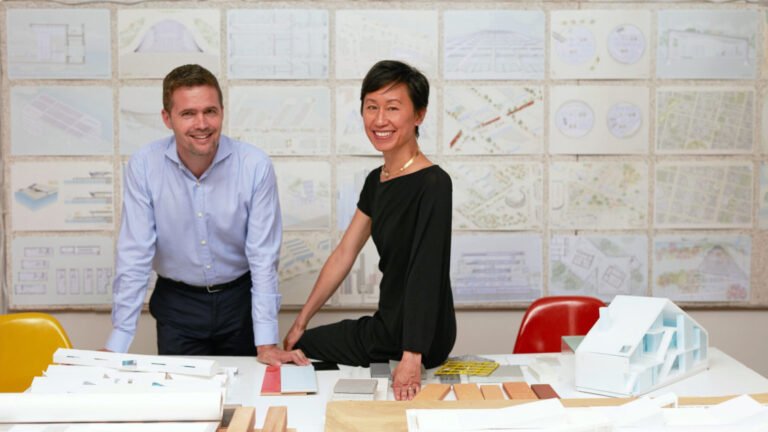The ZHA-designed MAXXI museum launches an environmental improve competitors
A little over a decade into its existence, the Zaha Hadid Architects (ZHA)-designed MAXXI museum in Rome will soon undergo a major expansion as part of the recently unveiled Grande MAXXI master plan. The new addition will have to “confront the ‘new world’ being shaped by important environmental, financial and health crises” per the museum. The roughly $16 million project, which will be led by a firm selected through a just-launched international design competition, will also entail a significant landscaping/public realm revamp and a slew of sustainability-minded upgrades to ZHA’s sinuous concrete and steel museum complex, which was bestowed the 2010 Stirling Prize and several other awards and accolades upon its opening as Italy’s first national museum dedicated to contemporary art and architecture.
ZHA had won the bid for the high-profile commission in 1998, with construction wrapping up in 2009 at the site of a former 19th-century military barracks in Rome’s largely residential Flaminio district.
“More than ten years after opening to the public, the museum designed by Zaha Hadid, the MAXXI — National Museum of 21st Century Arts in Rome intends to confront the challenge represented by a further innovation, marked by sustainability and state-of-the-art technologies,” the museum explained in a brief overview of the project.
The built centerpiece of Grande MAXXI will be a two-story multipurpose structure, the MAXXI Hub, featuring dedicated research and development spaces, storage facilities, conservation laboratories, and more, that will be fused to the existing museum building to the south via an expansive green roof. The new building will be located just north of the existing museum along Via Masaccio. As detailed by The Art Newspaper, a new public green space dubbed MAXXI Green will also be realized on the edge of the museum campus and including space for outdoor art installations, al fresco events, and vegetable gardens that will supply the museum’s restaurant and café. Any existing accessibility issues at the current museum campus will also be addressed and remedied.
Notably, Grande MAXXI calls the installation of over 30,000 square feet of photovoltaic panels on the museum’s roofs. This will enable the institution to produce roughly a third of its own energy with the goal of eventually achieving carbon neutrality “within a few years,” The Art Newspaper relayed project coordinator Margherita Guccione as saying during an online master plan presentation on February 10.
“In its first ten years, MAXXI has grown, it has transformed, it has become a device for research, training, experimentation,” said Fondazione MAXXI president Giovanna Melandri at the press conference. “We have learned a lot in the years of the pandemic, bringing our content to the digital world and strengthening the museum’s educational and social function. Now is the time for a natural and further evolution, in the name of urban regeneration, sustainability, and the most advanced technologies, to confront the new world that must emerge from the syndemic, environmental, social, and health crisis and become even more a laboratory of the future”.
As for the Fondazione MAXXI-organized design competition, applications are due on May 13 and a winning proposal is scheduled to be announced on July 12. Construction is expected to kick off early next year with an anticipated completion date in 2026. AN will check back in when a winner in this sure-to-be-hot cultural commission has been revealed.
You can read the full competition brief here.

